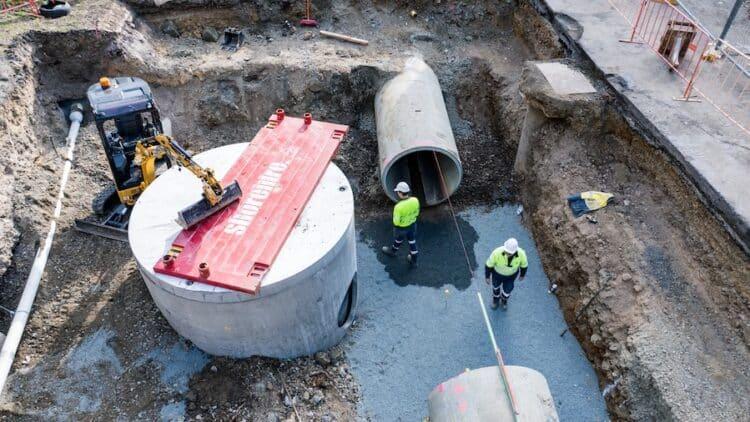
A Call for Coordinated Investment in Hobart’s Ageing Underground Infrastructure
Hobart’s underground infrastructure is showing its age. As our city grows and development accelerates, the pressure on our networks—some dating back to the 1800s—is becoming increasingly visible. The cost of inaction is not theoretical: burst mains, flooded businesses, and disrupted services are becoming more frequent.
Both TasWater, which owns and operates water and sewer infrastructure, and the Hobart City Council, which manages stormwater infrastructure, face mounting challenges. These stem from ageing assets, increasing urban development, and the intensifying effects of climate change.
You may remember the works performed by UTAS in Melville Street that closed the part of the street for months affecting many small businesses at the time – it was a significant upgrade in this very type of infrastructure that was required to allow for the development of the Forestry building. It’s common to see a general project needing infrastructure works costing up to $200,000 being added to a development application. Imagine if there was a supporting hand from State Government contributing to these costs when most needed.
More intense housing developments can mean that a heavy downpour can result in flooding. The impacts are throughout both our CBD and suburbs. Developers throughout our city can find themselves being asked to fund these upgrades – which can only increase the overall price of the build, putting financial pressure on families attempting to build their first home and developers trying to garner an extra floor of units in a high rise building all needed to balance those costs.
For City of Hobart, the stormwater network is at a critical juncture. The age profile of the system, combined with historical development patterns, demands innovative solutions to maintain service levels under growing climate pressures.
The City of Hobart supports the Southern Tasmania Regional Land Use Strategy (STRLUS), which promotes denser development. However, this intensifies pressure on already strained underground networks. Success will require a genuine partnership between Council, TasWater, developers, and the State Government.
Unfortunately, this partnership is not yet realised. Just last year, the City of Hobart unsuccessfully requested financial support from the State Government to address stormwater infrastructure needs. Developers as a result are often required to bear the full cost of stormwater upgrades as part of their development applications.
While “growth pays for growth” may sound fair in theory, in practice it stifles the supply chain. Viable projects collapse under infrastructure cost burdens, builders withdraw, and community benefits remain unrealised. Moreover, upgraded stormwater systems benefit all residents—not just those in new developments. Shifting the financial burden to developers inflates housing costs and perpetuates a cycle of economic strain.
I envision instead that the City of Hobart could thrive with a shared investment model, where the State Government makes available annual funding to support infrastructure upgrades tied to development. Grants or rebates could be offered based on location, project type, and public benefit. This would reduce financial risk for developers, encourage growth in priority zones, and ensure infrastructure keeps pace with demand.
Other cities have successfully implemented cost-sharing models to deliver infrastructure without compromising viability. Hobart can do the same—with a framework tailored to our geography and growth priorities.
We must also acknowledge the broader issue: governments across Australia are grappling with underinvestment in infrastructure renewals. As assets reach the end of their useful life, maintenance costs rise and replacement becomes inevitable. Strategic investment now will save money—and disruption—later.
Let’s be clear: the pipes may run underground, but their failures surface in our streets, shops, and homes. Whether it’s water or stormwater, we need a coordinated, well-funded plan to build resilience and support growth. The time to act is now—before the next burst writes another headline.
